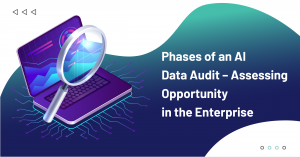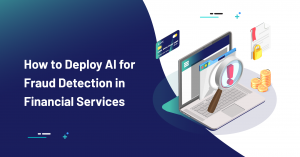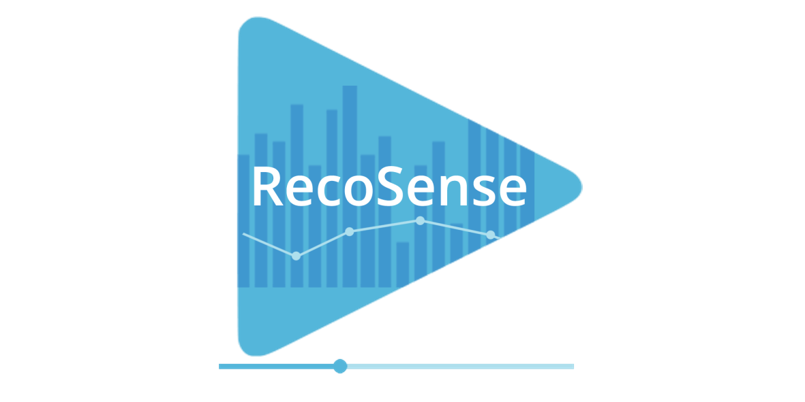Text Analytics
Overview
Text analytics plays a significant role in natural language processing to unearth insights from unstructured data. As most of the data collected by organizations are unstructured, the potential to find insights from unstructured data is more than structured data through text analytics. Since most of the data is unstructured over the internet, the ability to finding value from natural language processing can be a game-changer for companies.
Need For Text Analytics
It is characterized as an automated process of converting enormous volumes of non-pattern text into quantitative information to develop invaluable insights. Text analytics helps companies to not only gain information from in-house data but also from across the internet. Businesses, with text analytics, can understand the sentiment of customers, find information from documents, and understand the market.
The main goal of text analytics is to provide us with the necessary information and insight from unstructured text.
- It helps us to understand and derive meaning from text, customer review, and sentiment among customers about your brand on social media
- Text analysis helps you to understand real-world unstructured data with ease
- It assists you in building bots that can resolve queries both with text or voice replies
- Text analysis can empower companies to understand rich metadata to offer personalized products and services
Makes you Consistent
Manually handling data is a tedious task and takes a lot of your time. Even after investing a huge amount of time, there are plenty of chances to commit mistakes. This manual work system can also turn out inconsistent or subjective. AI helps in compiling the exact data without any errors. It also assists in obtaining accurate and relevant insights.
Text analysis provides real-time data
To grow your business, it is required to serve your customer at the right time. If you fail to detect unhappy customers, it would lead to business loss since there is no dearth of alternatives in the competitive world. Using different text analytics business models, you can gain crucial insights instantly and take necessary actions to retain users.
Concepts and Definition
-
Text Mining -
Content Analysis -
Textual Analysis Vs Content Analysis -
Computer-Assisted Textual Analysis -
Natural Language Processing (NLP) -
Ontologies, Vocabularies, and Custom Dictionaries
Text mining is the process of collecting unstructured data and then converting it into structured data by extracting only the relevant information. Text mining includes scraping information from different sources, including paper documentsText mining can process information from emails, messages, social media posts, and internal documents for understanding sentiments, finding relevant information, and assimilating customer sentiment. Text Mining helps you in identifying facts and assertions which otherwise remain unnoticed. Automates the insights deliver from day-to-day interactions within or external to organizations
Content analysis is a subdomain of text analysis, which empowers organizations to analyze certain words from the text. This enables companies to examine a large number of text data and come out with concepts related to topics or themes. Along with text, with the help of content analysis, you can also analyze different graphics such as pictures and videos. In other words, content analysis is can also be called a specific type of text analysis that only focuses on specific requirements instead of understanding the entire structure of the text.
| Textual Analysis | Content Analysis |
|---|---|
| It is a qualitative way of data analysis | It is a quantitative way of data analysis |
| It is basically data collecting method that helps us analyze the text information | Content analysis gather and examine data in form of segments |
| The analysis is flexible in nature | It focuses on a specific analysis of text data |
| It is a broader term for textual analysis | It is a subdomain of textual analysis |
Computer Assisted Textual Analysis is a process of analysis that uses different techniques to process parts of speech and classify texts automatically. General computation like counting the frequency of words in text or removing stopwords can be daunting. But, with the help of computational power, the text analysis can be streamlined to process a colossal amount of data in real-time. Natural language processing requires professionals more resources than structured data analysis, pinpointing the necessity of computational power with ready-to-use solutions for textual analysis.
NLP is a branch of AI that helps computers learn and understand human languages. It helps in filling the gap between human and machinery language for better understanding. NLP enables machines to interpret the meaning from different human languages such as Spanish, Arabic, and English. It helps in both understanding different human languages and generating natural languages to provide output that is human-friendly.
Different voice search AI devices such as Google Voice and Alexa are based on NLP, which respond to your commands or requests.
Ontologies, Vocabularies, and Custom Dictionaries are powerful tools that make text analysis easier with data extraction for finding content relation. These are the essential components of text mining to effectively find meaning out of text data.Although ontologies are of different types, domain-based ontologies are more powerful when used with natural learning processing. It helps you to understand the real meaning of text written in different ways. Similarly, the ability to vocabulary and custom dictionaries with NLP-based applications can deliver better results than general algorithms for text analysis.
Textual Analysis Technique
Word frequency
It refers to the most commonly used terms or phrases in a dataset. Counting the number of times words are repeated in collected data will lead you to collect information that are central in the dataset. Insights into word frequency can also be used to balance the importance of other less prominent topics, which might be crucial for business.
Collocation
It is defined as a series of words that often occur together. They are usually found as bigram and trigram. It can provide you with the tone of writers for sentimental analysis. Collocation is one of the most important techniques that can allow organizations to learn what their users experience while interacting with the brand.
Concordance
It is a list in A to Z order of the words used in a book. It can be defined as an agreement of opinions, or it can describe things in harmony. It is used to identify cases where a word or series of words can be found to understand the meaning that can be different from the general usage of phase.
Text classification
It is defined as the way of providing labels or tags to unstructured information depending on its content. Unstructured data means a wide range of text-based data that is complex and present in an unorganized way.For organizations, unstructured data may incorporate messages, emails, and social media posts. Accurately classifying the text can lead to finding domain-specific insights to gain in-depth understanding.
Text extraction
Often companies need only a part of data from huge text datasets for creating structured data. To extract only useful data, companies need to use regular expressions and build quality datasets while eliminating others. The ability to collect what you need by filtering purposeless information is key for organizations to eliminate data silos.

Advanced techniques
Topic Analysis
Topic analysis enables organizations to assign predefined tags to any gathered information on the basis of text analysis. In other words, topic analysis is used to categorize data into various topics while analyzing text data. It gives important information about the data, especially from documents and social media posts.
Sentiment Analysis
It is also known as ‘opinion mining,’ which is a process of understanding an opinion’s attributes, that is, the emotions that underlie the text. It helps in gaining opportunities in all kinds of areas. Sentiment analysis can be useful in analyzing customer feedback, social media posts, email, among others.
Language Detection
As the name predefine, it features any text based on the language used. It is mainly used for finding the right language and using the right set of algorithms for a particular language. Since every language has different grammatical rules, a generic algorithm to process languages will fail to deliver consistent results. To cater to a wide range of customers speaking or writing in different languages.
Intent Detection
Intent detection plays an essential role in recognizing the exact inference from the text. It depicts any specific text’s purpose and helps you analyze the customer chat with the support executive. With intent detection, you can also quickly analyze the intent behind the text to provide relevant search results.
Entity Extraction
It is part of the Natural Learning program, which quickly identifies any name entities involved in the text. These entities can be anything like person name, locations, percentage, and many more. This is frequently used while analyzing reports to gain insights quickly and make necessary decisions.
Accelerate AI and Deep Learning
in your Organization and Remove any Performance Bottlenecks with our Solutions.
Benefits
- Text analytics is the computerized process of translating large volumes of unorganized texts into significant data with perception, trends, and patterns. With the help of text analytics, anyone can understand the back story easily and come with suitable decisions for their organization accordingly
- Massive Amounts of indeterminate data are generated every other minute. This will help you to extract valuable insights from unstructured data, emails, different social media posts and allow you to be familiar with the risk and opportunities available with the gathered information
- The gathered data will help you get valuable insights and know all the risks at priority.
- Using AI real-time analysis, you can answer customers’ queries instantly.
- Better product development by analyzing customers’ feedback
- It will help you in optimizing different business operations involving text information.

01
Scalability
- It helps to analyze as much data as you need in just a few seconds. It will make you more productive instead of reading every textual data manually and finding insights.
- Increase operational efficiency with quick turn arounds especially when your team is short-staffed.




02
Real-time analysis
- To grow your business, you must keep your eye on real-time analysis. It is determining factors to know about your customer in no time.
- It helps you to process and analyze the collected information from different sources instantly.




03
Consistent criteria
- Manual routine tasks (like tagging incoming tickets or processing customer feedback, for example) usually ends up being monotonous and very time-consuming. With text analytics companies can automate the process of manual labor to increase efficiency.
- With text analytics, companies can keep biases in check. The requirements applied within the team members often turn out to be subjective and incompatible, and there are more chances of making mistakes if the analysis is carried out manually.
Latest Posts
See all posts


Artificial Intelligence   Data Engineering   Finance
Phases of an AI Data Audit – Assessing Opportunity in the Enterprise
Artificial Intelligence has proved to be a game-changer for many industries and has evolved exponentially over the few years. It is already incorporated into various sectors like smart homes, Ecommerce, driverless cars, and computing systems using machine learning and data mining. Recently it has made its mark in artificial intelligence in accounting and auditing […]
![]()
![]()
![]()
![]()
0
0


Artificial Intelligence   Finance
How to Deploy AI for Fraud Detection in Financial Services
Fraud is the most significant concern for the finance industry and its clients, resulting in massive losses year after year. The majority of frauds target the retail customer segment. However, companies and, in some cases, even big institutions like banks get deliberately targeted by fraudulent activities. Nonetheless, the finance industry doesn’t need to wait for the future to […]
![]()
![]()
![]()
![]()
0
0


Media
Digital Trends Underpinning Media and Entertainment In 2021
Digital trends have experienced significant shifts owing to the pandemic and the resultant lockdown period. This caused a massive expedition in the speed of digital adoption for consumers in 2020. Digital Media Trends Video streaming was imposed worldwide during the beginning of the lock-down. OTT became a hot favourite among netizens because of its unique […]
![]()
![]()
![]()
![]()
0
0

